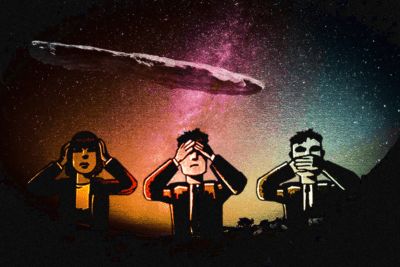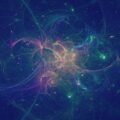Are we alone in the universe?
Gazing into the vast expanse of the stars, humanity has pondered this question for as long as we’ve known it was outer space and not the heavens themselves that comprised the celestial sphere. Theologians, philosophers, and scientists alike have nearly unanimously concluded: “No!”
Applying their respective tradecrafts — religious doctrine, logical deduction, and mathematical inference — mankind’s most influential disciplines have offered compelling evidence in support of the existential conclusion that others are out there somewhere. In the unfathomable vastness of space, many among our brightest and wisest minds believe it is simply inconceivable that Earth is the only place where life has flourished over the nearly 14 billion years since the birth of the universe. Despite Herculean efforts in multiple disciplines, however, the belief that life must exist outside of the “pale blue dot” we call home has remained just a belief — albeit an informed one. A plausible theory based on abductive reasoning, but positively unverifiable.
Yet one distinguished astrophysicist says the answer to this age-old question may already have passed us by and, surprisingly, no one seems to care.
Since the fall of 2017, Dr. Abraham “Avi” Loeb, the longest serving chair of Harvard’s Department of Astronomy and author of Extraterrestrial: The First Sign of Intelligent Life Beyond Earth, has found himself in the interesting position of facing not only the difficult question of whether we are alone in the universe, but the even trickier and more unsettling question that follows: “Do we even want to know?”


‘Oumuamua – A Tiny Speck from the Beyond
On October 19, 2017, University of Hawaii astronomer Robert Weryk found himself confronted by a mystery as he examined data collected by the Pan-STARRS1 telescope, high atop the volcanic summit of Haleakalā on the tropical island of Maui.
Built thanks to funding from the U.S. Air Force, Pan-STARRS — a pair of telescopes comprising the Panoramic Survey Telescope and Rapid Response System — possesses some of the highest-definition cameras in the world. Continuously surveying a full three-quarters of the sky for moving or variable objects, the telescope array’s primary job is to detect near-Earth objects that could potentially pose impact risks to the planet.
Hardly impressive to the layman’s eye, the particular anomaly spotted by Pan-STARRS that fall of 2017 resembled little more than a tiny, faint speck against a background of blurry Braille. Dr. Weryk went to work.
Going back through days of data collected by Pan-STARRS, the object’s trajectory as it whizzed through the solar system perplexed him. “When I attempted to fit an orbital trajectory, I noticed it wouldn’t fit well even though there was nothing odd about it in the image data,” Dr. Weryk told me in an email.
Though Dr. Weryk is credited with being the first person to notice the unusual object, it was Italian astronomer Marco Micheli who closed the gap on the mystery. “I contacted a colleague of mine (Marco Micheli) at ESA [the European Space Agency], and with some additional data he had collected, it became clear that the orbit could fit if it was hyperbolic,” said Weryk. “My reaction at that time was more of an ‘Aha! That would explain it!’”
After examining two weeks of previous observations, the astronomical community declared in November 2017 with near-absolute certainty that the object was traveling at hyperbolic excess velocity — meaning Dr. Weryk’s tiny dot represented our first-ever detection of a visiting object, originating from outside our solar system.
“I thought of my undergraduate thesis, which was to look for interstellar meteoroids using a meteor radar system in Canada. I didn’t find anything conclusive in that work,” Dr. Weryk told me, offering a moment of lighthearted nostalgia. “Eventually I sent a note to my former advisor about it — so [it was] a bit of ‘closure’ 13 years later.”
Detection of the interstellar visitor to our solar system raised many new questions and spurred fresh scientific debate. Topping the list of challenges: What exactly was this cosmic interloper?


‘Oumuamua – What’s In a Name?
Internally, the Pan-STARRS observatory called their historic dot P10Ee5V. Since that didn’t exactly roll off the tongue, though, the Pan-STARRS team suggested the name ‘Oumuamua, pronounced “oh moo ah moo ah.”
In the Hawaiian language, ‘Ou means “to reach out for.” The word mua roughly translates to “first” or “in advance of.” Combining these two words, and doubling the latter to emphasize its pioneering nature, the International Astronomical Union (IAU) defines ‘Oumuamua as “a messenger from afar, arriving first.”
For the IAU — the official body who assigns designations for astronomical objects — the colloquial name ‘Oumuamua was the easy part. Officially classifying the interstellar object, on the other hand, proved to be a more daunting task.
Eleven days after its discovery, the IAU issued ‘Oumuamua the classification name C/2017 U1 — the “C” denoting that the object was a comet. Only 18 hours later, the IAU changed their mind and reclassified ‘Oumuamua as A/2017 U1. This time the leading “A” meant ‘Oumuamua was an asteroid. Less than a month later, though, a seemingly bemused IAU created an entirely new designation for interstellar objects, settling on 1I/2017 U1 as the mystery visitor’s official astronomical name.
Far from a frivolous piece of Jeopardy! trivia, the IAU’s indecisive classification process is emblematic of the scientific community’s relationship with ‘Oumuamua — a back-and-forth struggle between the standard and the novel, between entrenched science and something entirely unprecedented.


‘Oumuamua – Unlike Anything Seen Before or Since
Over three years since its initial discovery, scientists are little closer to concluding exactly what ‘Oumuamua is than they were in the fall of 2017.
Data generated by the interstellar traveler’s reflection of sunlight as it passed through the solar system suggests ‘Oumuamua has an extremely elongated shape, with a length roughly five to ten times its width. The object is believed to be on the order of 330 to 3,300 feet (100 to 1,000 meters) long, with an estimated thickness of 115 to 548 ft (35 to 167 meters). Its thin, elongated shape makes it vastly unlike any asteroid ever observed.
Adding to researchers’ consternation, ‘Oumuamua deviated from its projected path as it passed by the Sun, displaying unusual non-gravitational acceleration. Initially, it was assumed this acceleration was caused by outgassing, suggesting ‘Oumuamua was a comet. Data from the Spitzer Space Telescope, the Solar and Heliospheric Observatory (SOHO), and the Solar Terrestrial Relations Observatory (STEREO) all failed to show any evidence of that, however. Chiefly, none of these sophisticated devices ever observed a cometary tail or outpouring of gasses coming from ‘Oumuamua — this despite NASA bragging in 2015 that SOHO was “the greatest comet finder of all time.”
Examining data captured as ‘Oumuamua passed its closest point to the Sun, the Spitzer Space Telescope failed to show any heat (in the form of infrared radiation) coming from it. For this to be possible, ‘Oumuamua has to be at least ten times more reflective than previously known asteroids or comets. If ‘Oumuamua were slightly smaller than current estimates, brightness levels would imply its surface would be consistent with shiny metal.


In August 2019, Crimean amateur astronomer Gennadiy Borisov discovered a second interstellar interloper passing through the solar system. Rather than help solve any of the mysteries ‘Oumuamua brought up, this second visitor only deepened them.
Unlike ‘Oumuamua, the new object 2I/Borisov was undeniably a rogue comet — indeed, its tail was measured to be 14 times the size of Earth. Yale astronomer Pieter van Dokkum said of the nearly 100,000-mile-long tail, “It’s humbling to realize how small Earth is next to this visitor from another solar system.”
Astronomers know how comets and asteroids should appear and behave, and ‘Oumuamua doesn’t seem to fit. Yet scientists and researchers have failed thus far to come up with a comprehensive alternative model that accounts for all of its peculiar characteristics. This is, of course, not for lack of trying.
One recent theory suggests ‘Oumuamua could be a “cosmic dust bunny,” a fractal conglomerate of dust and ice grains. While an intriguing theory, there’s no evidence of any similar cosmic dust aggregates against which to compare ‘Oumuamua.
Another leading theory has been that ‘Oumuamua is a comet made of hydrogen ice. This hypothesis offered a plausible explanation for how the object could undergo non-gravitational acceleration while lacking the telltale signs of being a comet. But empirical research published last year by the American Astronomical Society proved hydrogen icebergs cannot form out of small grains and showed that such objects would quickly vaporize while traveling through interstellar space.
The lack of a conclusive explanation for ‘Oumuamua hasn’t stopped the vast majority of space scientists from concluding that, whatever it is, it’s definitely something natural.
Notwithstanding this widespread assumption, one highly prestigious astrophysicist turned unexpected pariah has come out condemning his colleagues for trying to force a natural explanation unduly. In the ensuing years since ‘Oumuamua buzzed within 15 million miles of where you’re sitting, Harvard’s Avi Loeb has concluded that — based on the information we have — one of the most likely scenarios is that the cosmic traveler has an artificial origin.
By “artificial,” he doesn’t necessarily mean ‘Oumuamua was an alien spaceship. Though it certainly could be, Loeb has clarified it could easily be a probe, a solar sail, or even a piece of extraterrestrial space junk. Nevertheless, such a distinguished member of the astronomical community suggesting ‘Oumuamua may already have told us humans aren’t alone in the universe has understandably set off a firestorm of attention and controversy.


‘Oumuamua’s Distinguished Pariah
You might not agree with Avi Loeb’s theory that ‘Oumuamua could be an artificial alien object. You might be fair in calling Loeb a maverick, a renegade, or a rebel for his unabashed willingness to double, triple and in his recently published book – Extraterrestrial: The First Sign of Intelligent Life Beyond Earth – quadruple down on his claims.
You cannot, however, call Dr. Loeb a crackpot.
With over three decades of Ivy League professorship, including serving as the longest serving chair of Harvard’s Department of Astronomy (2011-2020), Loeb has contributed over 900 peer -reviewed academic papers to the disciplines of physics and space science. In 2020, Loeb was sworn in as a member of the President’s Council of Advisors on Science and Technology.
By one quantitative metric that scientists and scholars use to measure their success, the h-index, a value of 12 is considered good enough to secure university tenure, 20 a sign of notable success, and 40 representative of an “outstanding scientist.” Loeb boasts a gaudy h-index of 112.
In 2012, while ‘Oumuamua was probably skimming through the vast outermost reaches of the solar system, Time magazine named Dr. Loeb one of the “25 Most Influential People in Space,” his photograph appearing in the magazine alongside Elon Musk’s.
Before becoming known around the world for his theory that ‘Oumuamua could have been an alien artifact, Loeb was known outside of the academic community for giving lectures on modesty. Coining it “cosmic modesty,” Loeb says the search for extraterrestrial life begins with the humility to accept that, in the vastness of space, it’s improbable we are alone — and in fact, it’s likely humanity isn’t all that special.
Describing himself as non-religious, Loeb’s description of cosmic modesty employs imagery of the early 19th century Rabbi Simcha Bunim of Peshischa’s iconic counsel on maintaining humility: Keep two pieces of paper in your pocket at all times. On one: “I am a speck of dust,” and on the other: “The world was created for me.”
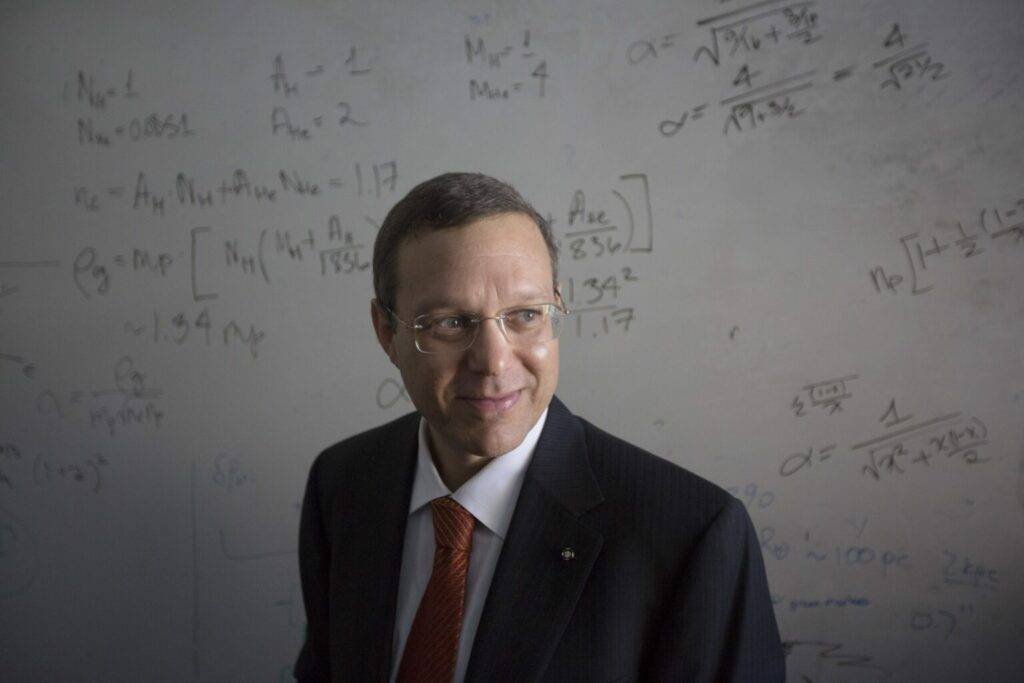

I sat down recently to chat with Dr. Loeb by video about his contentious theory on ‘Oumuamua and the recent publication of Extraterrestrial: The First Sign of Intelligent Life Beyond Earth.
From a stately home office that seemed to be the quintessential bureau of an Ivy League professor, Loeb beamed with eager, almost childlike, excitement as he ran down the most significant aspects about ‘Oumuamua for his extraterrestrial hypothesis. “Any of the mainstream people, that were serious astronomers or physicists, that tried to attend to the details of the evidence in order to explain it — not just make blanket statements — have to come up with something we have never seen before,” stressed Loeb.
“To me that says: If you are willing to compare something we have never seen before, let’s contemplate all the things we’ve never seen before; let’s compare all of these somethings we have never seen before, and consider also the artificial origin is something we haven’t seen before. Why not?! What’s the problem with that? But, no, no, no… don’t discuss that! There is a taboo.”
Smartly dressed for our video chat in a tailored suit complete with a Harvard-crimson necktie, something became abundantly clear as I listened to Loeb discuss his cerebral journey with ‘Oumuamua with a steady smile — the controversy he has created surpasses simply a substantive scientific debate and extends beyond, into the foundations of our institutional culture.
While our discussion revolved around ‘Oumuamua itself, the core of Loeb’s insurgency on the scientific community is the flouting of taboo — specifically one of the most taboo subjects to modern science, beset on all sides by sociological and psychological intolerance.
The Order of the Dolphin
In November, 1961, the Space Science Board for the most distinguished scientific body in the United States, the National Academy of Sciences, convened a meeting at the National Radio Astronomy Observatory in Green Bank, West Virginia. The ten attendees to the meeting were some of the world’s most distinguished and internationally recognized leaders of their fields: astrophysicist Frank Drake, neuroscientist John C. Lilly, biochemist Melvin Calvin, optical astronomer Su-Shu Huang, computing pioneer Barney Oliver, radio astronomers Otto Struve and Dana Atchley, ballistics expert J. Peter Pearman, physicist Philip Morrison, and a 27-year-old Carl Sagan.
Because John Lilly was heavily involved in researching dolphin communication, the group lightheartedly dubbed themselves “The Order of the Dolphin.”
At this meeting held upon West Virginia’s Potomac Highlands, it was announced that Melvin Calvin had won the Nobel Prize in Chemistry for his discovery of the chemical pathways of photosynthesis. But for our purposes, the significant achievement to come from the conference was the creation of the Drake equation.
The Drake equation represents a rough attempt to estimate the number of active, communicative extraterrestrial civilizations in the Milky Way galaxy using a series of probabilistic variables. In 1961, “The Order of the Dolphin” used the Drake equation to estimate there were between 1,000 and 100 million planets with intelligent life in our own galaxy alone.
Many people today are familiar with the Drake equation, but far fewer know its origin story, much less about “The Order of the Dolphin.” This obscurity was by design: Attendees had purposely kept the meeting secret because of the subject matter they intended to discuss — the search for extraterrestrial life.
Ten of the most preeminent scientists of our time — including a Nobel Prize winner; the first person to conceive and coin the term “habitable zone” (Su-Shu Huang); and arguably the most famous astronomer in modern history, Carl Sagan — sought to bring the disciplines of the scientific method to bear upon the question, “Are we alone?” Yet, out of fear of being scoffed at, ridiculed, or called “wild-eyed dreamers,” this could only be done in the shadows.
Analogous circumstances persist today in many ways, and it is this dynamic that Avi Loeb is challenging directly.
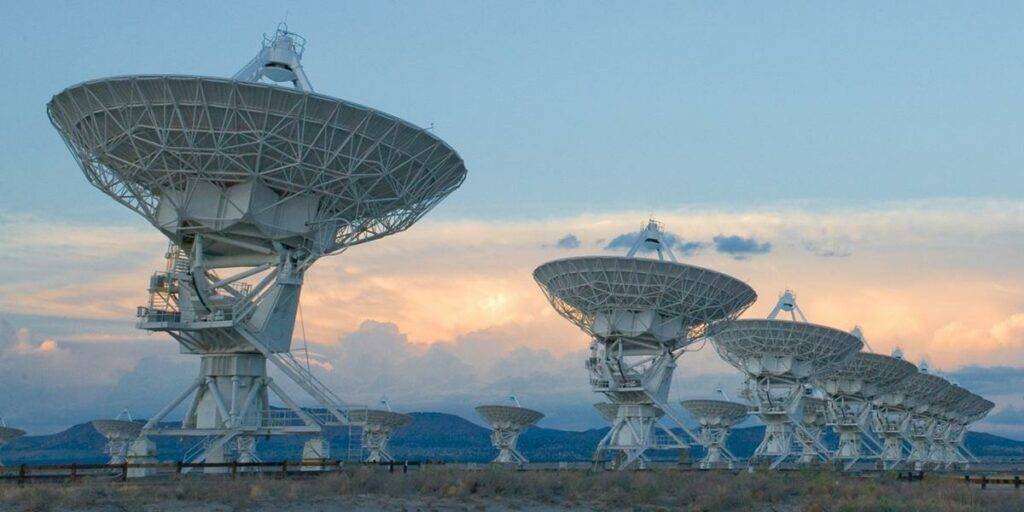

Teeming with Life?
But things have changed since 1961. In the ensuing six decades, there have been numerous attempts to refine the parameters of the Drake equation. Serving as crude guesses at the prospects for alien life, these efforts tend to produce widely divergent results.
One thing scientists know today that could only be speculated about in 1961 is that there seem to be plenty of exoplanets orbiting stars throughout the galaxy. As of late 2020, more than 4,000 confirmed exoplanets had been discovered. Thousands more exoplanet candidates are awaiting further observation.
Of the 4,000 confirmed exoplanets, 60 appear within the habitable zone of their parent star at this time, suggesting conditions could be ripe for life to flourish. Research published last year in The Astronomical Journal concluded there may be as many as 300 million habitable worlds in the Milky Way alone.
Columbia astronomer David Kipping also published a study on the subject last year in the Proceedings of the National Academy of Sciences, concluding that “the case for a universe teeming with life emerges as the favored bet” based on Bayesian statistics. Soon after, another study published in The Astrophysical Journal suggested 2,900 worlds in the Milky Way may harbor intelligent life, estimating at least 30 exoplanets should harbor life capable of communicating with Earth.
Astronomer and astrophysicist Seth Shostak of the SETI Institute has famously declared he’s so convinced we’ll find intelligent extraterrestrials by the year 2036, he’ll bet you a cup of coffee.
The scientific community agrees fairly unanimously today that it’s mathematically impossible for our species to be the only intelligent life form in the universe. But the debate over ‘Oumuamua and the criticism faced by Avi Loeb demonstrate there’s a hard trench line between what kind of inquiry is or isn’t acceptable when considering the potential for alien life.
To many in the academic world, Dr. Loeb has crossed that thick line. Instead of safely suggesting alien life might theoretically lurk somewhere millions of light-years away, Loeb has dared declare material proof of alien life might have passed right by us, a mere 15 million miles away.
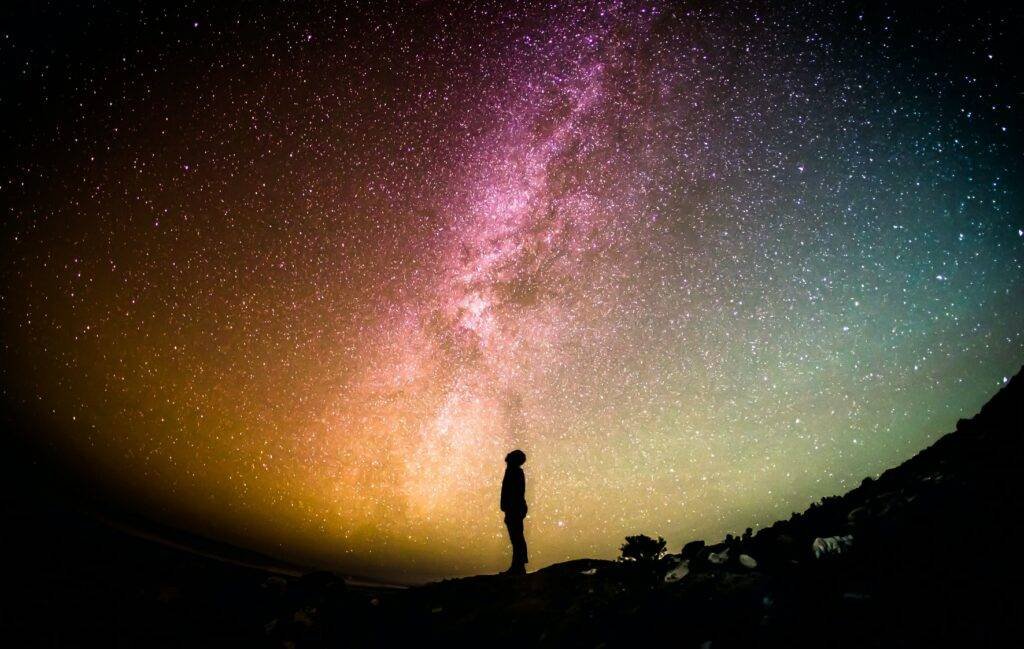

Thou Shalt Not Mention Extraterrestrials
Examining the criticism lobbed at Loeb amid the mere suggestion that ‘Oumuamua could have been alien, many of the harshest critiques appear more dogmatic than truly scientific. For their part, his critics argue Loeb’s postulations are philosophical rather than representative of pure science.
After Loeb and co-author Shmuel Bialy’s paper was published in The Astrophysical Journal Letters in 2018, first suggesting ‘Oumuamua might have an extraterrestrial origin, a fairly typical response came from Paul M. Sutter, research professor at the Institute for Advanced Computational Science at Stony Brook University and author of How to Die in Space: A Journey Through Dangerous Astrophysical Phenomena, took to Twitter, declaring, “No, ‘Oumuamua is not an alien spaceship, and the authors of the paper insult honest scientific inquiry to even suggest it.”
A later interview with The Dispatch might offer some insight into Dr. Sutter’s emotive response. When asked, “Do you think there’s alien life out there?”
Sutter said, “I do think there are aliens out there, but I think we’re effectively alone in our universe. There’s probably life out there, but they’re so far removed from our place and time that I don’t think we’ll get to talk to them.”
By simply making their case to the field in peer-reviewed form, had Dr. Loeb and his co-author offended Dr. Sutter’s sense of scientific propriety, or his peremptory belief that humanity is bound to know only a lonely existence?
I reached out to Dr. Sutter to see if his opinion had changed in the ensuing years since his terse dismissal of Loeb’s work. “No change. Dr. Loeb is making a giant claim based on no evidence. Just because we don’t understand something, it doesn’t mean we get to declare it’s aliens. Lack of evidence does not give you license to assert whatever you want. That’s not how science works,” Sutter replied in an email.
Sutter denied his contention has anything to do with his own personal beliefs on the existence of extraterrestrial life. “I take exception with his interpretation of the data, his lack of rigor, and his disregard for science. What he is doing looks more like pseudoscience.”
Dr. Loeb becomes animated when he discusses being viewed as a heretic. “We should be humble. We should be modest. We can’t assume we know everything in advance. We can’t say, ‘it’s never aliens.’ How can anyone say that? How can anyone ever say it’s never something?!” Loeb throws up his arms in exasperation. “To me, it reminds me of how the Church was behaving towards Galileo Galilei. When he said the Earth moves around the Sun, they put him under house arrest. But that didn’t change the way the Earth rotates. You cannot change your reality if you ignore it. You just maintain your ignorance.”
The UFO Curse
When his academic paper was first published in 2018, Avi Loeb became perhaps the most distinguished extraterrestrial advocate in modern history, and his claims on ‘Oumuamua became an instant media sensation. With slight variations, months worth of headlines read: Harvard Astrophysicist Says Aliens Passed by Earth!
Rather than shying away from the attention, Dr. Loeb has embraced the role of media darling. In the weeks leading up to the January 26 release of his new book, Extraterrestrial, Loeb has promoted it unabashedly on a host of radio shows and podcasts, including those based in the tacit belief that UFOs have long been visiting Earth.
“Here’s how you can tell Avi Loeb is a serious, sober researcher of ancient alien spaceships: He’s appearing tonight on ‘Coast to Coast A.M.’ He’ll be on right after UFO propagandist Leslie Kean, who’ll be talking about ghosts and going to heaven. You know, science,” said a recent Twitter blast from Jason Colavito, stalwart critic of all things paranormal and author of The Mound Builder Myth: Fake History and the Hunt for a “Lost White Race”.
“I think we’re all big boys here and recognize that Loeb is appearing in various media outlets to sell books. We needn’t pretend otherwise. ‘Coast to Coast’ is a uniquely awful program that gives platforms to some of the very worst conspiracy theorists,” Colavito told me when I reached him for comment. “The good that can be done by speaking to believers directly depends entirely on the speaker’s purpose, goals, and approach. If you go on a pro-UFO show to say you discovered a spacecraft, I’m not sure that accomplishes anything but reinforcing belief.”
During our exchange, Mr. Colavito clarified that his critique of Loeb has less to do with Loeb’s scientific interpretation of ‘Oumuamua and more to do with what he feels is an intermixing of philosophical and existential views under the shroud of science. “I don’t believe he thinks he is promulgating ersatz philosophy, but I’ve read enough of these arguments to know when moral arguments are wrapped up in scientific clothes,” said Colavito.
It is true that it’s difficult to divorce Loeb’s theory of ‘Oumuamua as a manufactured object from the pre-existing hoopla surrounding UFOs — and all the more so now, when the subject of mysterious unidentifiable objects traversing the skies has become a hot-button issue for the U.S. government in the past few years (something on which I myself have written extensively).
Much of the public interest in ‘Oumuamua comes from imagery of flying saucers or “Tic Tacs,” invariably evoked by Loeb’s claims. And the reflexive connection made between anything extraterrestrial and the highly stigmatized UFO subject is likely a considerable factor behind the academic community’s antipathy toward Loeb’s work in this area.
For his part, he laments, “How dare the scientists that have the technology to search and answer this question — how dare the scientists shy away from any discussion because it’s taboo. When, at the same time, we are doing a search for the nature of dark matter. We’ve spent hundreds of millions of dollars … on experiments that ruled out the possibilities [for dark matter]. Why shouldn’t we spend the same amount on the search for extraterrestrial life?”
“Just because there are unsubstantiated reports about unidentified flying objects or there is science fiction literature, that isn’t a good enough reason,” asserts Loeb. “If scientists have a tool to address a question, they should apply that tool, irrespective of what other nonsense has been said by other people. Who cares about the UFO reports?!”
Hardly sounding like a “true believer” when it comes to the topic of UFOs, Loeb maintains an inquisitive but hard-nosed bent. “In the context of UFO reports, suppose the military makes some claims, okay. Then the same military or another funding agent in government should go out, put some scientific instruments in place, and see if they can find an answer. There’s nothing wrong with examining it scientifically,” said Loeb.


Peer-Reviewed and Public-Facing on ‘Oumuamua
While many in the scientific community may not agree with the extraterrestrial theory for ‘Oumuamua, Dr. Loeb has certainly followed the gold-standard process for scientific inquiry in pursuing it. Both Loeb’s initial claim and the defense of his theory have primarily played out through peer-reviewed publication in one of the most prestigious scientific journals covering astronomy and astrophysics.
Nevertheless, some will still criticize Loeb for authoring his recent book, Extraterrestrial, accusing him of trying to solicit public appeal for his alien theories. According to Loeb, these perceptions are as misguided as assuming ‘Oumuamua must be a natural object because it simply must be.
“My goal is to convey the excitement of science, in that it is driven by curiosity — just like kids explore the world. It should not be driven by ambition to get honors, awards, or prizes. By echo chambers that you often find in academia, whereby senior people groom postdocs and students so that they repeat their mantras. They do this so their voice is louder and they can improve their image. That is not the purpose of science, but unfortunately it occupies center stage,” conveyed Loeb when I asked him why he’d decided to write Extraterrestrial. “If I can convince even one kid, anywhere in the world, that science can be exciting and because it can answer a question like, ‘are we alone’ through data that we collect from the sky — that would make me very happy.”
His willingness to engage the public, including adherents to what some might consider fringe beliefs — like the existence of alien visitation — is another aspect of Loeb that makes him an anomaly in academia.
“Scientists are incentivized by getting their research published in prestigious journals. That gives them tenure, autonomy, and more research grants in their field. They’re disincentivized to actually spend any time engaging with the public,” Fraser Cain, the publisher of Universe Today and co-host of Astronomy Cast, explained to me in an email.
“The only scientists you see regularly engaging with the public truly enjoy it or feel passionate about educating the public (or to publicize an upcoming book), despite the lack of support from their institutions. And I know, from us as outsiders, that seems really bizarre, since more press helps their university, which gets them more students. Scientists should be encouraged to engage with the public, but they’re not. It’s a really bizarre cycle, that’s somehow got a missing link that I haven’t been able to tease out yet,” said Cain.
For this article, I reached out to numerous researchers who’ve published scientific papers offering contrasting theories on ‘Oumuamua, including the authors of the “dust bunny” hypothesis. None responded to my requests.
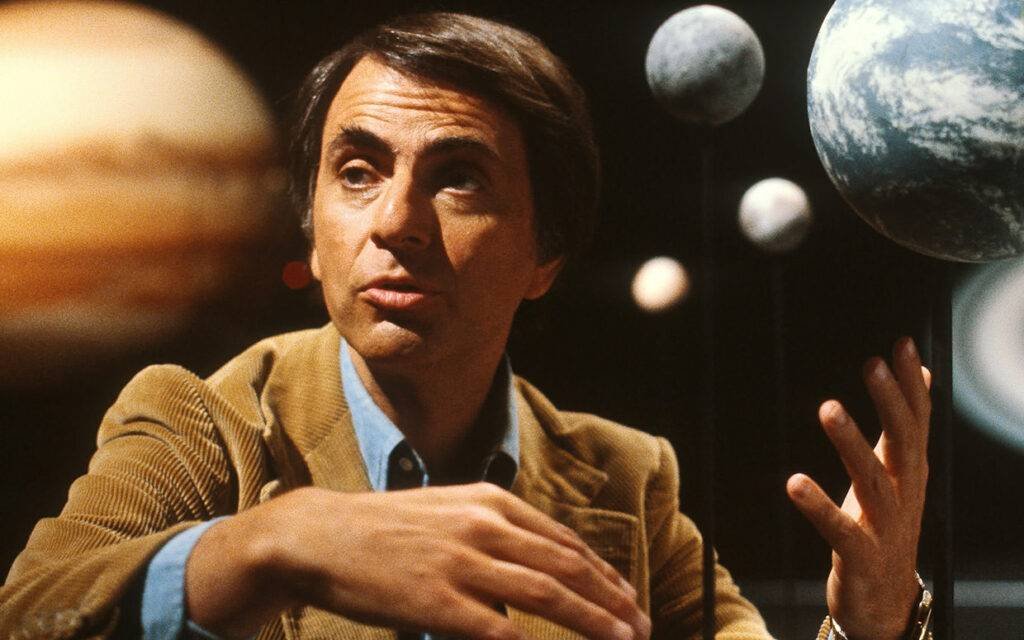

Extraordinary Claims
When it comes to challenging the scientific mainstream, Dr. Daniele Fanelli of the London School of Economics and Political Science told me, “I believe that a certain inertia was always built into the scientific system, and for good reasons. Typically, if a set of ideas are accepted as the current ‘paradigm’ that’s because they work pretty well empirically, and they tie in logically with many other theories and evidence.”
A professor of quantitative methodology, Fanelli specializes in examining scientific misconduct and problems that affect research and publication practices. “In short, extraordinary claims require extraordinary evidence, as the old adage goes,” said Fanelli.
Ever the maverick, Avi Loeb throws up his hands when I mention the slogan. “Extraordinary is a very subjective thing and depends on how you view things. You might even say that the Earth moving around the Sun is extraordinary.”
The salience of Carl Sagan’s iconic neologism strikes at the very core of the controversy over ‘Oumuamua.
To his credit, Fanelli offers a pure, good faith interpretation of the maxim’s focus on evidence rather than dogma. “That doesn’t mean that challenging and unorthodox views should be impeded, and that the challengers should be ostracized. They should be encouraged to expound their views. But resisting new ideas and requiring high standards of proof is quite literally the job of peer reviewers,” explained Fanelli.
Likewise, Loeb isn’t wrong in denouncing how the phrase, dubbed the “Sagan Standard,” is often applied. Rather than encouraging scientific inquiry in pursuit of incredible answers, the aphorism has often been used as a means of suppressing incredible questions.
As far as the man who coined what has become science’s unofficial mantra — a man who famously said the search for intelligent life in the universe should be unencumbered by the stigma associated with UFOs, yet had to hide in the mountains of West Virginia to even discuss it — we can only speculate on where Carl Sagan would fall in the debate over ‘Oumuamua.
Regardless of what packs of critics might say and despite how stacks of headlines may read, it seemed apparent to me after several conversations that Avi Loeb isn’t trying to convince you, me, or anyone that ‘Oumuamua is conclusively an alien object. In fact, in Extraterrestrial Loeb expressly notes that the object has long since passed out of our sight. The likelihood of finding demonstrative proof of what exactly it is at this point is very remote, if not impossible.
Rather, this founding director of Harvard’s Black Hole Initiative is making such waves because he’s remorselessly challenging the delicately prideful realm of scientific culture and academic thought.
For the vast majority of academia, scientific progress represents “development-by-accumulation,” whereby accepted facts and theories slowly nudge knowledge forward. With his claims, and using ‘Oumuamua as a vessel, Loeb is exemplifying how periods of “normal science” can be disrupted by the discovery of something entirely novel.
In The Structure of Scientific Revolutions, Thomas S. Kuhn argued that the discovery of “anomalies” leads to new paradigms, which then ask new questions of past data, moving science beyond the mere puzzle-solving stage toward mapping out an entirely new direction of scientific research. Kuhn insisted that these “paradigm shifts” (a term he coined) were driven by a melange of sociology, enthusiasm, and scientific promise, and not by a logically determined process. Like Loeb, Kuhn was labeled a heretic and criticized for his claims.
Scientific progress depends on innovative ideas. Yet, under the accepted standards of empirical inquiry, a host of published and peer-reviewed research illustrates the scientific community’s extreme bias against novelty. This phenomenon leads plenty of innovative research and ideas to be scoffed at and dismissed.
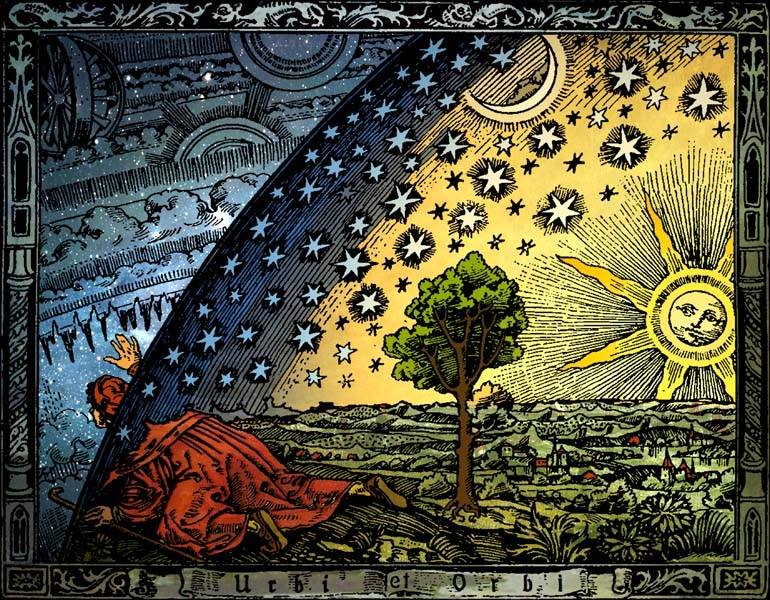

Putting His Body on the Barbed Wire with ‘Oumuamua
Avi Loeb has thrown down the gauntlet in the absence of any conclusive natural explanation for ‘Oumuamua. He offers a clear scientific argument that all of the anomalous data points detected can be accounted for by an object of artificial extraterrestrial origin. To his peers’ dismay, instead of sitting down and being quiet, Loeb brazenly stands up and says, “Prove me wrong!”
Yet arguing over whether ‘Oumuamua was an alien object misses the second and arguably more significant point Dr. Loeb has been making.
“In theoretical physics you find concepts like extra dimensions, supersymmetry, superstring theory, the multiverse — that are all considered mainstream, and people give each other awards for engaging in intellectual gymnastics on all these concepts. This has no connection to experimental verification, and the public is really unable to follow,” an animated Loeb explains to me.
“All these people who popularize science, they talk about it and act like it’s really frontier. But it’s not really frontier! It has no connection to us. They don’t put any skin into the game. The only way for a theoretical concept to be scientific is when it puts skin in the game. If you say, ‘I predict this!’ And if you do the experiment and don’t find this, okay then my theory is ruled out.”
Loeb expresses intense displeasure at the idea that extreme theoretical concepts like string theory should be considered acceptable while his suggestion that alien objects may pass through our solar system is treated as clownery. “These people, if you say, ‘Okay, can you make a prediction? Is there an experiment you can envision that would rule out your theoretical idea?’ And they would say, ‘No, whatever the experiment finds, I will be able to accommodate that.’ Is this science?! How can you call yourself a physicist if you don’t pay attention to reality!?!”
Loeb’s overarching argument is that science should be willing to consider and investigate the material, rational, and testable possibility that alien technology is zipping by us much too close for comfort for some. “There could be a lot of objects, many more, flying closer to us, but much smaller in size. Or also objects traveling faster, that we never recognize with our telescopes right now,” said Loeb.
To his most trenchant detractors, Loeb flashes a mischievous smile. “My suspicion is that many of the harshest critics really are intrigued by the possibility that alien life exists, but to hear someone speak out, it is opposite to their inner compass.”
Watching his passion as he rebukes critics and demands the institutions of science be more open-minded, one thing seems certain. It’s unlikely Avi Loeb is going to back down and fall in line with conservative academia anytime soon. “This possibility that life exists elsewhere is the conservative choice. The other possibility is the fringe,” Loeb smiles.
According to Ulukau Hawaiian Electronic Library, the word ‘Oumuamua means: “a leader, as in battle or other activity; a scout.” Reflecting on its name in this light, ‘Oumuamua seems a fitting partner for Dr. Loeb’s obstinate battle, the battle for science to shed its biases on the possibility of alien life.
Recalling his youth and service in the Israeli Defense Force, Loeb told me, “There is a saying that sometimes the soldier has to put his body on the barbed wire so that other soldiers can pass through. There is some pain in seeing the reaction of some of my colleagues, but I do feel that I am trying to establish an environment where younger people can think about it freely in the future.”
The Debrief’s Jed Holtzman contributed to this report.
